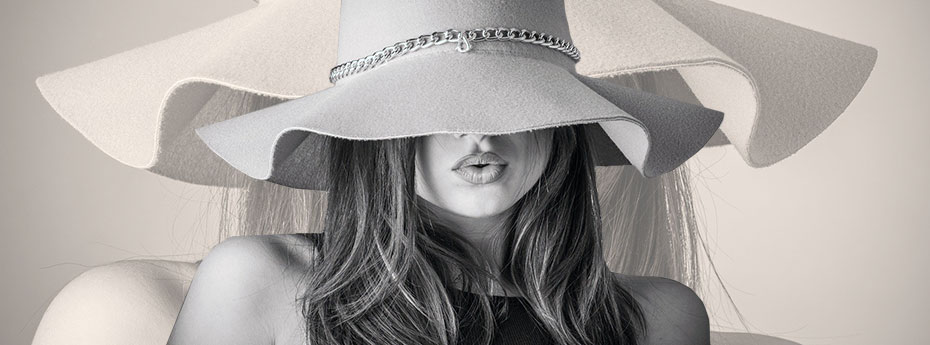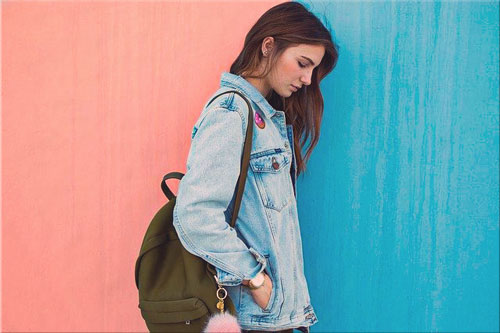
We often hear about such concepts as trends and anti-trends, relevant and out-of-date items, modern outfits, and old-fashioned clothing combinations in style. There are already many fashion blogs about it. Nevertheless, the topic continued to be in demand and sought after. Still, before you start reading this article, I want to focus on the concept of “actuality” and how it differs from “trendiness.”
The claim that fashion is cyclical is widespread and very reasonable. Globally speaking, the fashion industry is influenced by cycles or waves of varying lengths. A big wave lasts 7-10 years, a medium wave lasts about 2-4 years, and small waves can last 1-2 seasons and subsequently become obsolete.
The Big Fashion Wave
If we talk about the concept of modern fashion, then, first of all, it is a big fashion cycle or a global direction in which the fashion market moves.
As we have already established, the big fashion wave is a relatively long period, which is closely connected and is a direct reflection of economic, political and socio-cultural phenomena in society. A clear confirmation of the connection of global fashion trends with socio-cultural trends comes from the change of decades of fashion of the 20th century. Since the 90’s the big cycles began to accelerate and form considerably, replicating the previous epochs. However, each is characterized by its own recognizable forms and combinations.
Yes, the big wave is expressed precisely in basic forms and a specific set of clothes in an outfit. At the same time, the set of things, colors, prints, textures mostly remain more or less constant.

The current global fashion cycle is characterized by such elements as:
- convenience, simplicity, and even a certain carelessness in the outfit;
- naturalness, complete acceptance of yourself and your appearance;
- democracy;
- gender equality and unisex clothing;
- eclecticism and mixing of styles;
- ecological consciousness and awareness.
Medium Fashion Wave
Otherwise, we can call it a macro trend or a fashion tendency that stays on the fashion horizon for several years, changing slightly from season to season. Unlike global significant wave trends, macro trends can be completely multidirectional, giving us more freedom of individual choice and self-expression. For example, within the current big wave cycle, designers are constantly inspired by the aesthetics of different fashion decades: the 60s, 70s, 80s, 90s, and even the 2000s. There are completely contradictory trends in fashion. Here are examples of some of them.
- On the catwalks and pictures of street style, we often see freak-chic, self-irony, crazy eclecticism, a riot of prints and colors, layering, and oversized styles.
- Meanwhile, the style of minimalism, characterized by a laconic cut, clear lines, a strict silhouette, perfect fit, quality fabrics, calm colors and minimal decorations, is at the peak of popularity.
- In contrast to the trendy eclecticism, I can distinguish a very popular nowadays general look. It’s not just about color combinations in an outfit but also about the combination of textures, the mix of prints, and the overall look’s overall stylistics.
- The fashion culture of modern working-class suburbs and teenage maximalism is opposed to the chic of high fashion and luxury brands.
- Utilitarian style as a mix of work and sportswear with added military and safari elements is trendy now.
- Utilitarian style as a mix of work and sportswear with the addition of military and safari elements is now fashionable.
- Likewise, for several years, Western themes are appearing on the catwalks. Such style is very easy to integrate, for instance, into the boho-style.
- Public enthusiasm for the idea of respect for the planet’s resources and conscious consumption has made vintage clothing and retro style incredibly popular.
You can ignore some or even all of the mid-wave macro trends and still remain modern, but as long as you follow the global fashion trends of the current big cycle. Macro trends simply make the basic shapes of the big cycle even more relevant and add a higher degree of fashion and personality to your look.
Small Fashion Waves

Seasonal trends are bright design ideas and details that last only one or two seasons. After that, they are usually forgotten, at best, and, at worst, declared anti-trends.
These ideas are spread with breakneck speed by mass-market brands, fashion influencers, trendsetters, glossy magazines, and any other kinds of viral advertising. They are the biggest money-makers in the fashion industry of the 21st century.
Whether to buy trendy things, everyone decides for themselves. They can certainly add a fresh touch to your unique style when you have a matching closet. But any fleeting trend will remain in your closet as just another piece and won’t make it more fashionable or relevant if you don’t have the right closet or unique style.
For example, this category can easily include the acute trends of different years: ballet shoes with lacing, loafers with fur, clutch-book, acid colors, cotton shirts with embroidery…
Some on-trend items become especially popular at certain times of the year. These items spread quickly in the online fashion space and quickly become the object of most fashionistas’ dreams. Usually, these items occupy a fairly high price niche, but they are instantly and literally quoted by mass brands. Consequently, the endless flickering of images with a popular, recognizable closet item immediately causes a feeling of oversaturation with them.
How to Forecast the Fashion Trends
There are many points of view on the possibility of forecasting global cycles of modes. Personally, the closest to me is the theory of a periodic change of strong and weak periods.
The strong period is characterized by the addition of extra volume to the shape, rigid construction of the shoulder girdle, the simplification of the look, and its maximum approximation to the masculine style. Stiff, dense textures prevail, as well as an increased interest in military/work uniform elements. Yes, the same utilitarian style so popular within the current average fashion cycle. There has been an increased interest in vintage clothing and retro, crafts and second-hand styles. Obviously, the strong period is characterized by periods of economic crisis, political and military tensions.
In the weak period, women usually emphasize their femininity and sophistication in every possible way. Hourglass silhouette with soft drapey fabrics is popular, and gentle pastel colors are widely used. Today, we can only assume that the exaggerated femininity and sexuality, glitter and brightness of everyday looks will return to fashion again as soon as the economic crisis is over.





